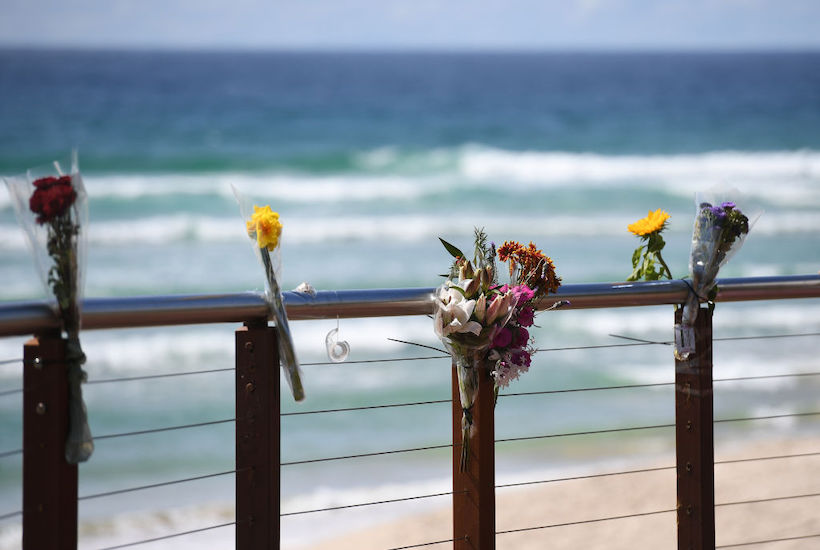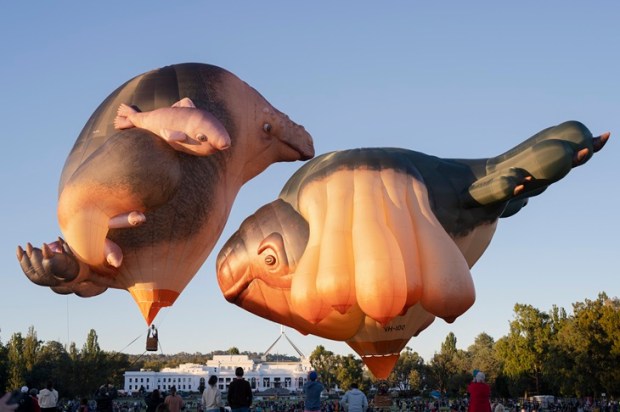There was a tragic story last week of the surfer killed by a 3.5-metre great white shark at Greenmount Beach, on the southern end of the Gold Coast.
The 46-year-old, Nick Slater, paddled out where many other surfers were, perhaps over a hundred as there often are.
This stretch of beach, from Snapper Rocks to Kirra, is not called ‘The Superbank’ for no reason. It is a vista of rolling waves.
And, if the swell is large enough, one can surf a wave from Snapper Rocks, past Rainbow Bay, past Greenmount and past Coolangatta, all the way to Kirra.
It is nature’s gift for this little pocket of Australia and a key attraction point for both domestic and international tourists.
But for Nick Slater, last Tuesday at 5 pm, this was where he had his final moments. Misfortune struck.
A therapeutic afternoon surf, as I often enjoy, gone wrong.
The Queensland Premier, Annastacia Palaszczuk, said last week, “The Shark Control Program has been saving lives for generations. If improvements can be made then, of course, they should be. But the ultimate goal has to be protecting human life.”
Those sentiments are correct.
But we must ask ourselves, how true is Queensland’s shark control program?
Yes, this has been the first fatal shark attack on Gold Coast beaches in 60 years and just three months after the death of surfer, Rob Pedretti, over the border, off Kingscliff, on the Tweed Coast.
We keep being spun this yarn, and I am sure many local beachgoers and tourists believe it, that the Gold Coast, supposedly, has shark nets.
The truth is, locals were disturbed to discover that, where this attack happened, there are no shark nets.
The Shark Control Program map from Queensland’s very own Department of Agriculture and Fisheries shows that the only deterrent around where the attack happened, were drumlines placed out at the tip of Snapper Rocks.
The closest shark net is north of the attack, at Kirra.
Drumlines have a bait with a shark hook. But if the shark does not take the bait, it can keep swimming.
Shark nets are more effective in catching passing sharks while they are feeding on baitfish. They have a depth of 6 metres and are 186 metres long. They are not impenetrable but when a shark bumps into them, they cannot back out due to the shape of their tail fin.
But answer me this: the bay in which this shark attack occurred used to be called ‘Shark Bay’ and ‘Danger Bay’ until, in 1925, the Point Danger Progress Association requested the Coolangatta Town Council discourage the use of these names and, instead, name them Rainbow Bay and Greenmount Bay.
So, how on earth could there not be one shark net placed in the waters of a bay which was initially dubbed ‘Shark Bay’?
Surely this betrays those swimmers who believed the nets were there.
Or is this what happens when you have green-tinged government bureaucracy and troglodyte politicians in charge of an area they know nothing about?
It has now been revealed that Queensland’s Shark Control Program on the Gold Coast only has 11 stretches of these nets, a total of two kilometres, to protect a 57-kilometre coastline.
If this is a Shark Control Program, then my name isn’t Jake Thrupp.
Queenslanders and visiting tourists are being misled and sold a false sense of protection. Even more disturbing is that these nets and drumlines are monitored by independent contractors. To whom are they answerable?
It is scandalous stuff.
Daryl McPhee, a shark expert from Bond University, explained that last Tuesday’s attack was a combination of three things, “whale migration where there are typically more great whites around… it was late in the afternoon… [and] there were a lot of baitfish in the water.”
He added, “The nets are not designed to be enclosures.”
Is it unreasonable to demand that these nets become more effective and, perhaps, act as an ironclad barrier between the swimmer and the shark?
I can hear the hippies yelling from around their campfires, how dare I suggest such a thing!
Which is more important, the life of a shark or the life of a human being?
Long-time operators of commercial fisheries in the Tweed and Gold Coast areas have reportedly witnessed a steep rise in the shark population within the last decade.
Michael Thompson, a commercial fishing industry spokesman, claimed earlier this year that the Department of Fisheries was ignoring concerns about the shark population boom.
Thompson said, “They’ve created an imbalance of biodiversity by protecting… the top end of the food chain, which is the sharks, and [allowing] you to harvest the rest. It’s a problem for recreational fishermen, commercial fishermen, the whole lot.”
These are the same brain-dead bureaucrats who preside over a Shark Control Program which has more holes than Swiss cheese.
Some politicians have, in fairness, chosen to side with human life over that of the shark.
The former NSW Premier, Mike Baird, tried, unsuccessfully, to implement shark nets in Ballina on the NSW North Coast. So what have we got?
There are more shark attacks in NSW than there are in any other State.
But Ballina sure does take the cake! It was once described as the shark attack capital of Australia and, one report last year claimed around 60 two-metre-long bull sharks were spotted off the North Wall breakwall in Ballina, forcing its closure.
This is why Mike Baird, a surfer himself, attempted to install shark nets. They never made it off the sand.
Why?
Because unwashed, sandal-wearing, kombucha-drinking greenies protested against the nets, saying that sea creatures would be entangled in them, therefore forcing Baird to crabwalk away from the decision.
This was no derring-do by Mike Baird. He was simply trying to protect ocean users in, what are, very shark-prone waters.
Who would have thought that a politician, for once, being proactive in rolling out an effective solution to a life and death problem would be accused of trading in peccadilloes?
We must ask ourselves whilst not allowing our morality to flood our thinking, which form of life must our governments work to protect?
If we leave all this in the hands of an increasingly green-leaning bureaucracy, defying the informed views of those with local knowledge, then we are placing the protection of the predatory shark above the lives of human beings.
That may be what some people want. I would assert that it is a minority view.
Got something to add? Join the discussion and comment below.
Get 10 issues for just $10
Subscribe to The Spectator Australia today for the next 10 magazine issues, plus full online access, for just $10.


























Comments
Don't miss out
Join the conversation with other Spectator Australia readers. Subscribe to leave a comment.
SUBSCRIBEAlready a subscriber? Log in